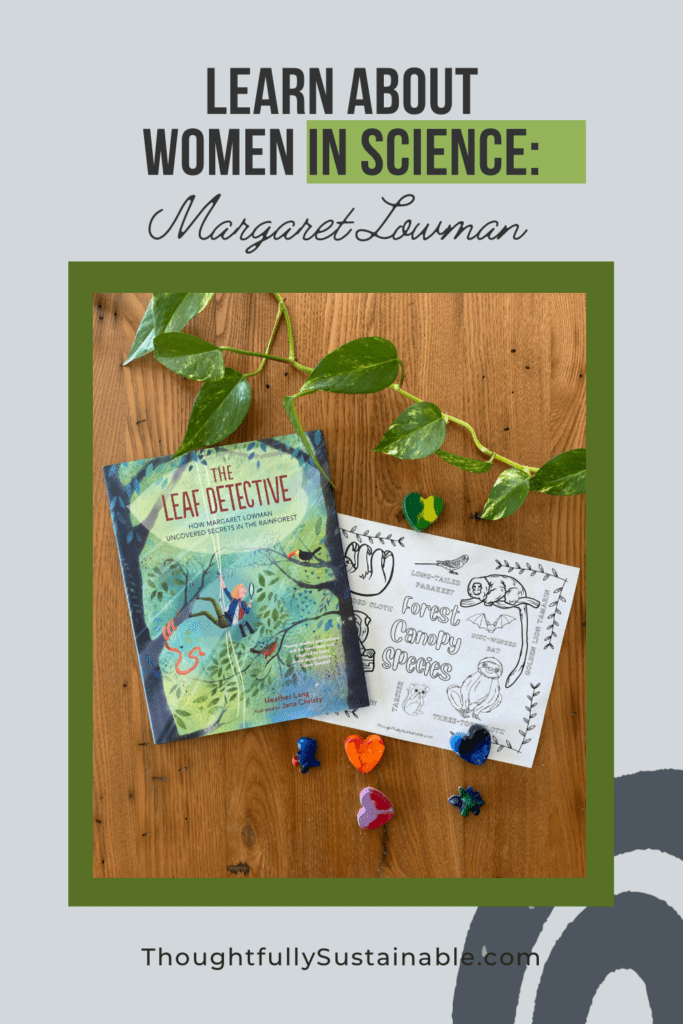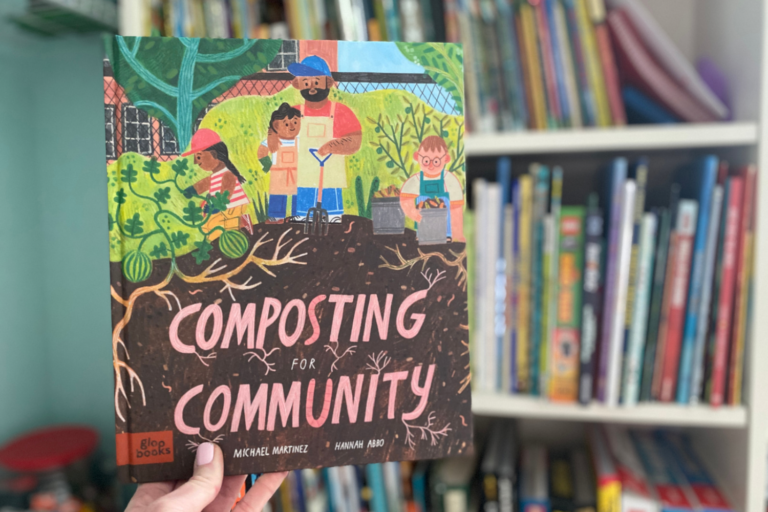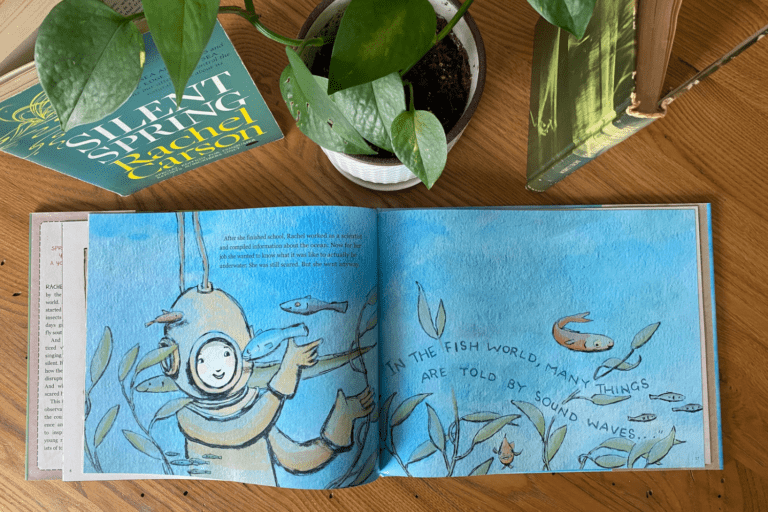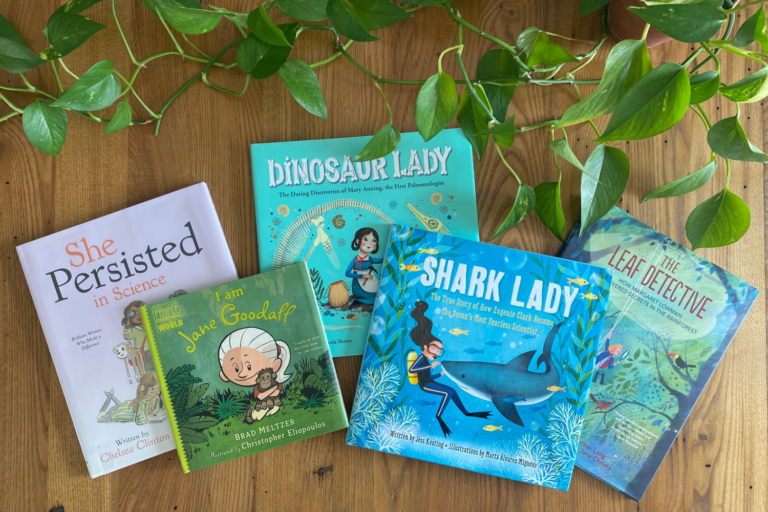Learning About Margaret Lowman: A Famous Female Scientist
Looking to introduce your kids to an amazing woman in science? Explore the research of female forest ecologist Margaret Lowman and her conservation work in the forest canopy. Read on for student book recommendations and hands-on activity ideas, and download a free science coloring page focused on unique forest canopy species.

This post contains affiliate links.
It’s no secret that I love science. Understanding how the natural world works has fascinated me since I was a little girl. I get positively giddy when I come across a picture book that focuses on conservation work, especially when the main character is female. It was rare in my childhood experience to come across female scientists highlighted in children’s picture books.
However, that has changed. I recently bought a copy of a picture book that highlights the work of forest ecologist Margaret Lowman and was thrilled with the contents! Her research is incredibly inspiring and can be a fabulous way to introduce learners to the biodiversity of forests.
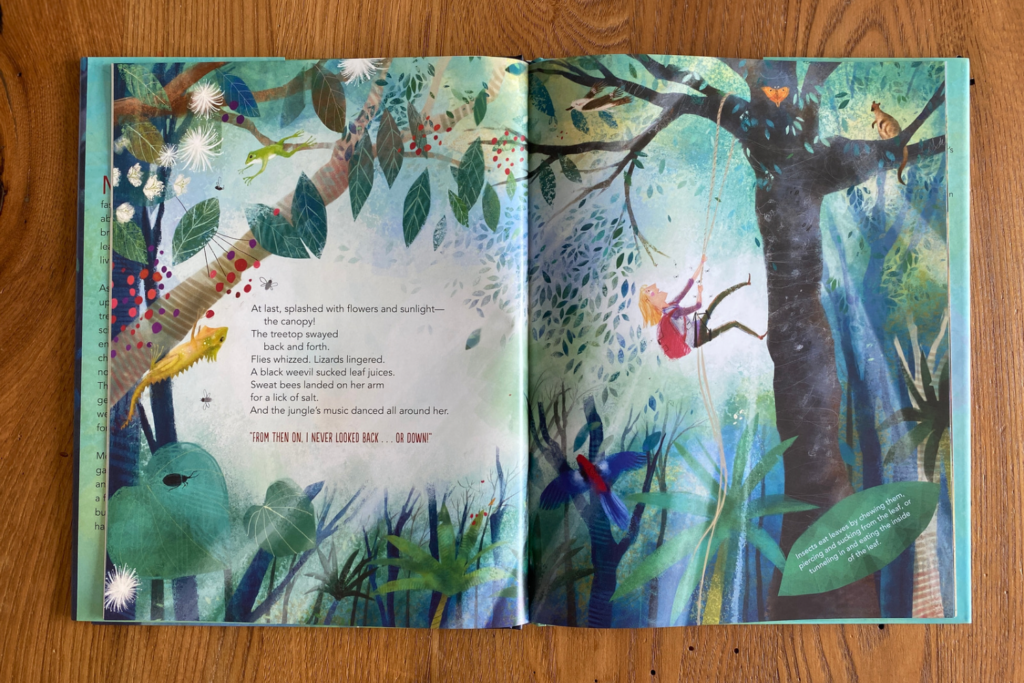
Who is Margaret Lowman?
Margaret Lowman, known as “Canopy Meg” and “The Real-life Lorax”, is an American forest ecologist and author known for her pioneering research on the ecology of canopy trees, the structure and function of forest canopies, and the impacts of global change on tropical and temperate forests. She has published numerous articles and books on these topics and has been recognized for her contributions to the field of ecology.
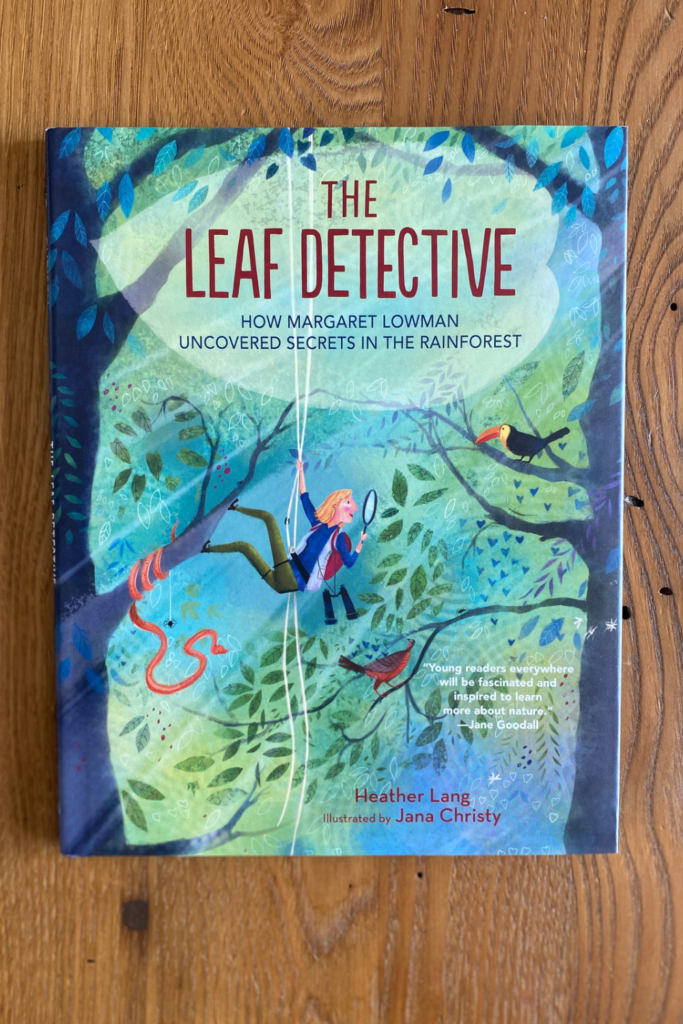
The Leaf Detective: How Margaret Lowman Uncovered the Secrets of the Rainforest
“The Leaf Detective” by Heather Lang is a children’s non-fiction book about the life and work of forest ecologist Margaret Lowman. The book provides an overview of Lowman’s scientific research on the canopy of trees and the diverse species that live there. It also highlights Lowman’s efforts to encourage young people to pursue careers in science and her passion for conservation and protecting the environment. Through clear explanations, engaging illustrations, and personal stories from Lowman herself, “The Leaf Detective” introduces young readers to the fascinating world of canopy ecology and the important work of forest scientists.
This picture book would be perfect to read aloud to students. Pair the read aloud with my free coloring sheet on forest canopy species and you’ve got a complete mini-lesson on forest ecology!
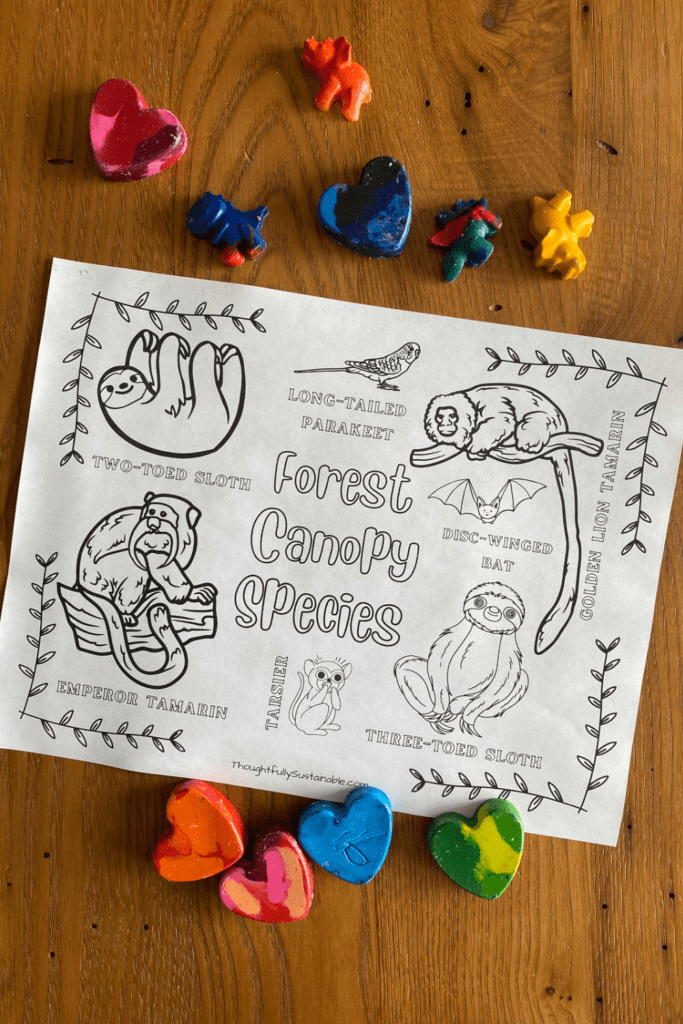
What is a Forest Ecologist?
A forest ecologist is a scientist who studies the interactions and relationships between forests and the organisms that live within them, including trees, shrubs, undergrowth, and wildlife. Forest ecology is the scientific study of forests and the processes that shape and maintain them. Forest ecologists study the structure, composition, and functioning of forest ecosystems, including the interactions between different species and the impact of environmental factors such as climate, topography, and soil type. They also study the impacts of human activities such as deforestation, fragmentation, and pollution on forest ecosystems, as well as the efforts to conserve and restore them. The goal of forest ecology is to understand the complex interplay between forests and the environment, and to use this knowledge to help manage and protect these important ecosystems.
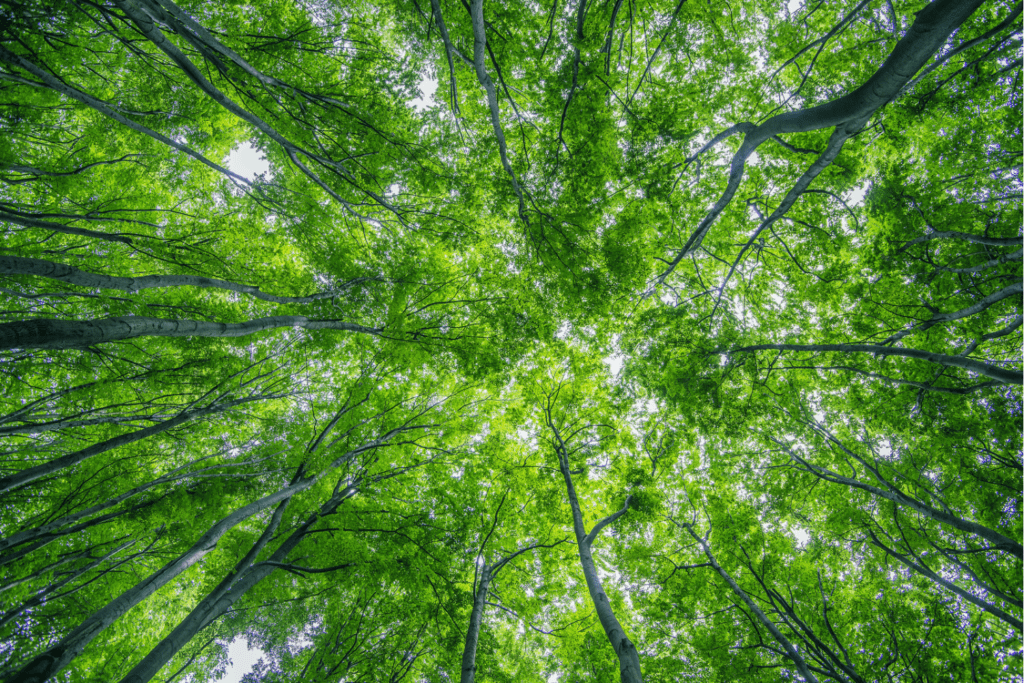
What is a Forest Canopy?
A forest canopy is the upper layer of foliage in a forest, formed by the leaves and branches of the tallest trees. The forest canopy is typically found at heights of about 30-40 meters (98-131 feet) or higher, and it forms a dense cover over the underlying forest floor. The forest canopy is an important and distinct ecosystem, home to a diverse community of plants, animals, and microbes that are adapted to life in this unique environment. Some species are found only in the forest canopy, and many species in the forest floor and understory also depend on the forest canopy for food, shelter, and other resources. The forest canopy plays an important role in regulating the Earth’s climate, controlling water and nutrient cycling, and supporting the livelihoods of people who live near forests.

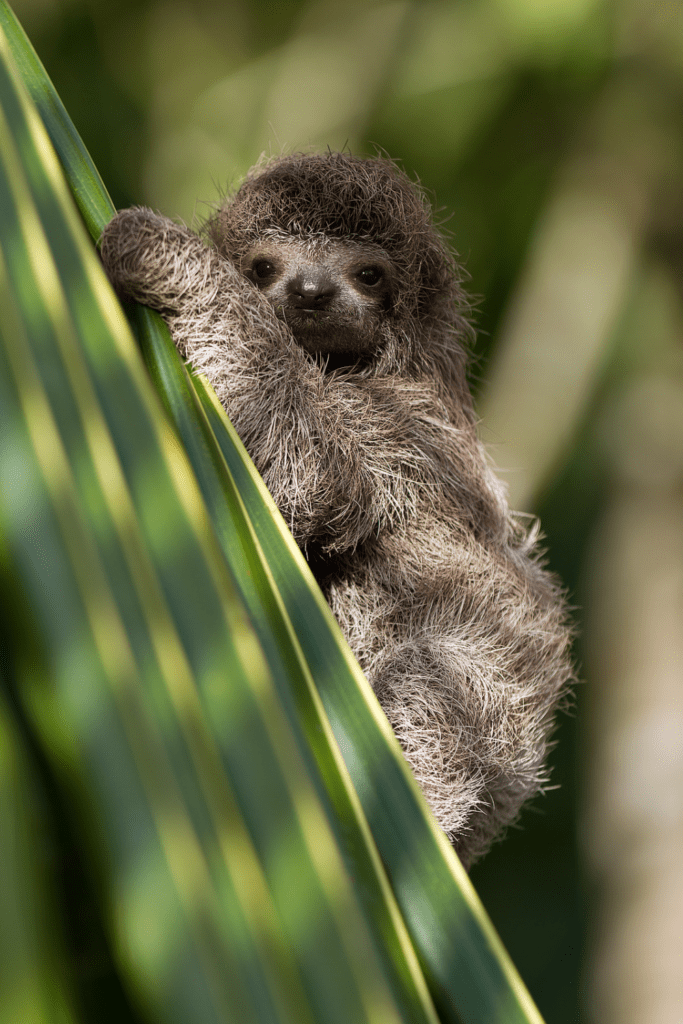

Species That Are Only Found in Forest Canopies
Here are some species that are found only in the forest canopy:
- Golden Lion Tamarin (Leontopithecus rosalia)
- Red-handed Tamarin (Saguinus midas)
- Emperor Tamarin (Saguinus imperator)
- Spix’s Disc-winged Bat (Thyroptera tricolor)
- Tarsier (Tarsius syrichta)
- Two-toed Sloth (Choloepus didactylus)
- Three-toed Sloth (Bradypus variegatus)
- Margay (Leopardus wiedii)
- Brazilian Wandering Spider (Phoneutria nigriventer)
- Long-tailed Parakeet (Psittacula longicauda)
These species are adapted to life in the canopy and typically have unique adaptations, such as long tails for balance, sharp claws for climbing, or specialized diets, that allow them to thrive in this environment.
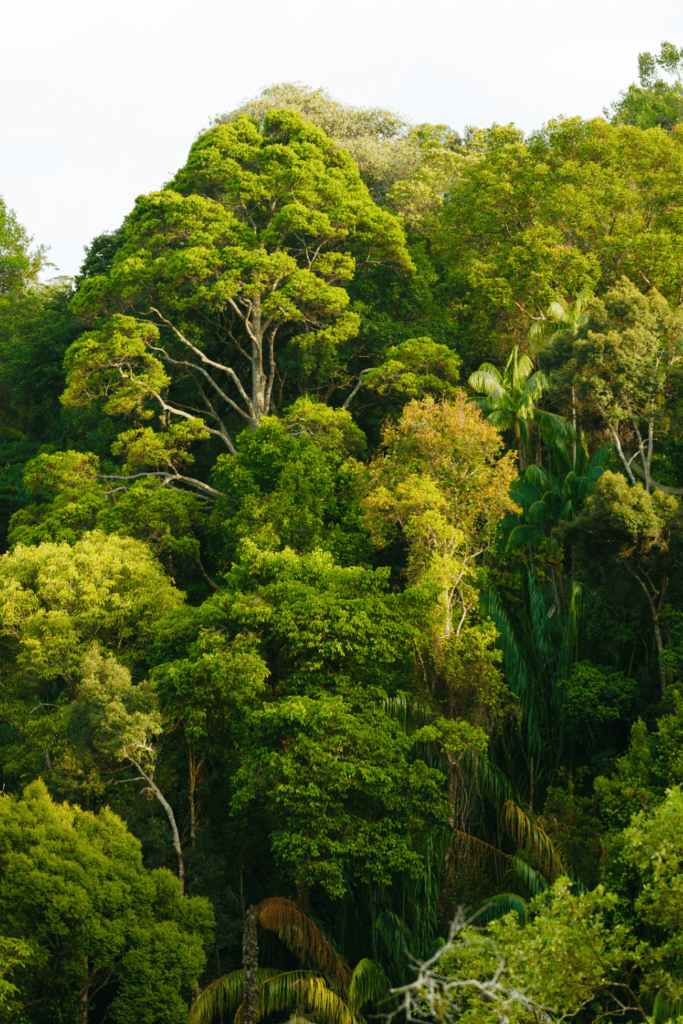
What Did Margaret Lowman Discover About Forest Canopies?
Margaret Lowman, also known as the “Queen of the Canopy,” made several important discoveries about forest canopies throughout her career as a tropical forest ecologist. Some of her key contributions include:
- Biodiversity of forest canopies: Lowman was one of the first scientists to study the rich and diverse communities of plants, animals, and microbes that inhabit the forest canopy.
- Importance of the forest canopy: Lowman showed that the forest canopy is an important ecosystem in its own right and plays a crucial role in regulating the Earth’s climate, controlling water and nutrient cycling, and supporting the livelihoods of people who live near forests.
- Canopy access methods: Lowman developed innovative techniques for accessing and studying the forest canopy, including canopy cranes, ropes and harnesses, and platforms suspended from trees.
- Interactions between forest canopy species: Lowman studied the complex interactions between species in the forest canopy, such as predator-prey relationships and plant-pollinator interactions.
Overall, Lowman’s work helped to increase our understanding of the importance of forest canopies and the complex ecosystems they support. Her legacy continues to inspire future generations of tropical ecologists and her work has had a lasting impact on the field of tropical forest ecology.
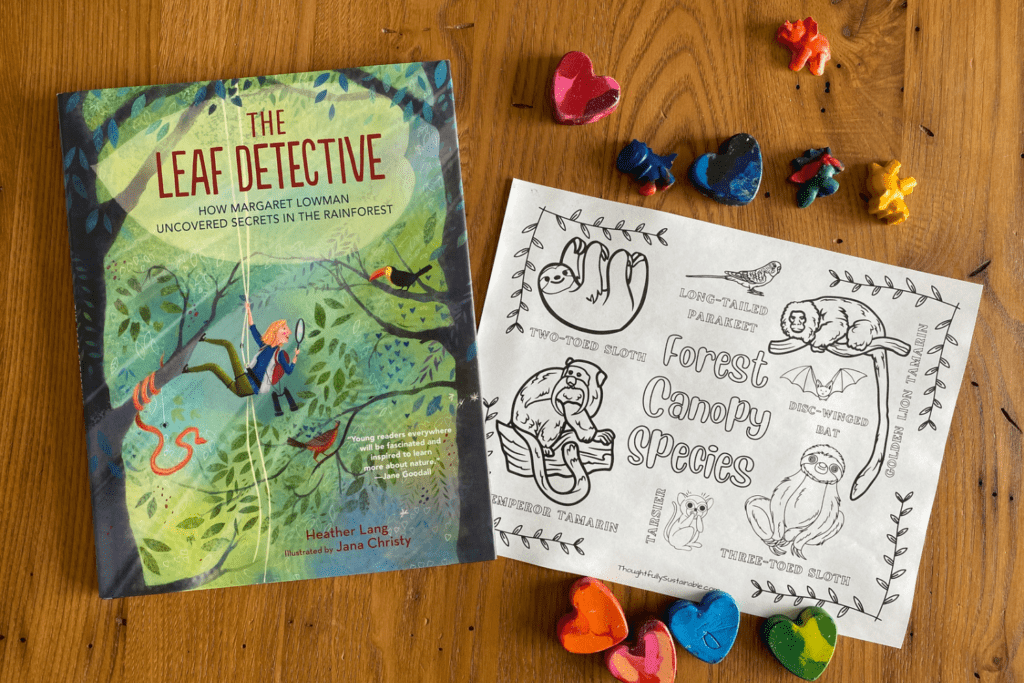
Activities for Kids to Explore Margaret Lowman’s World of Forest Canopies
You don’t have to live near a rainforest to allow your learners to experience a forest canopy. Here are some fun and educational activities that you can do with kids to teach them about forest canopies:
- Tree Identification: Take a walk in a local park or forest and have kids identify different trees and learn about their unique features, such as leaves, bark, and fruit.
- Leaf and bark rubbings: Using paper and crayons, have kids make rubbings of different leaves and tree bark to learn about the textures and patterns of different tree species.
- Canopy exploration: Visit a nearby arboretum or botanical garden that has a canopy walkway or tree house, where kids can get an up-close view of the forest canopy and learn about the plants and animals that live there.
- Nature journaling: Encourage kids to keep a nature journal where they can draw and write about their observations of the forest canopy and the plants and animals they see.
- Bird watching: Take binoculars and a bird identification guide on a walk in the forest to observe and identify different bird species, including those that live in the canopy.
- Canopy-inspired art: After exploring the forest canopy, have kids create art inspired by what they saw, such as drawings of trees, leaves, and animals, or sculptures made from natural materials found in the forest.
- Forest food chain: Use a food chain model or drawing to illustrate the relationships between plants, herbivores, predators, and decomposers in the forest canopy.
- Create a mini-canopy: Have kids create a model of a forest canopy using cardboard boxes, sticks, leaves, and other materials, and talk about the different plants and animals that live there and how they interact with each other.
- Animal species: Research an animal that lives primarily in the forest canopy and discuss its unique characteristics that make it suitable to live there. Download my free forest canopy species coloring sheet to get started.
These activities can be a fun and engaging way for kids to learn about the importance of the forest canopy and the complex ecosystem that exists within it.
Free Forest Canopy Species Coloring Sheet
Interested in a free, downloadable coloring sheet focused on the biodiversity of the forest canopy? Simply input your name and email address below to get your copy!
“How I Climb Trees to Save Forests”: TedX Youth Talk by Margaret Lowman
Here is a talk that Meg Lowman gav to students through the TedX Youth series that highlights her work as a forest ecologist.
More Books About Margaret Lowman’s Work
If you are interested in learning more about “Canopy Meg”, she has written several books about her work and experiences.
“Life in the Treetops: Adventures of a Woman in Field Biology” is written for a general audience, and can be enjoyed by people of all ages. Margaret Lowman writes in an engaging and accessible style, making the book suitable for young adults and adults alike. The book’s focus on the exciting adventures and experiences of a female field biologist, combined with its vivid descriptions of the rainforest canopy, makes it appealing to students, aspiring scientists, and nature enthusiasts. Additionally, the book’s message about the importance of protecting the environment and preserving biodiversity is relevant for all ages, making it a great choice for families and classrooms.
“It’s a Jungle Up There: More Tales from the Treetops” is a follow-up book to Margaret Lowman’s “Life in the Treetops: Adventures of a Woman in Field Biology.” In this book, Margaret continues to share her experiences as a pioneering female scientist in the field of canopy ecology. She takes readers on a journey through the treetops, exploring the rainforest canopy and the diverse plant and animal communities that call it home. Through personal anecdotes and vivid descriptions, Margaret illuminates the challenges and rewards of working in the field, and the importance of conserving the rainforest and its inhabitants. The book offers insights into the latest research and technological advancements in canopy ecology, and highlights the innovative techniques that Margaret and her colleagues have developed to access and study the treetops.
“The Arbornaut: A Life Discovering the Eighth Continent in the Trees Above Us” is Margaret Lowman’s most recent book, published in May, 2022. The book provides an in-depth look at Lowman’s life and work, as well as her journey to discover and explore the vast and complex world of the canopy. The book also covers the challenges and adventures Lowman faced as she traveled to remote parts of the world to study the canopy, and the impact her work has had on our understanding of the natural world.
More Women in Science Picture Books
Click here to discover more amazing women in science picture books for kids!

